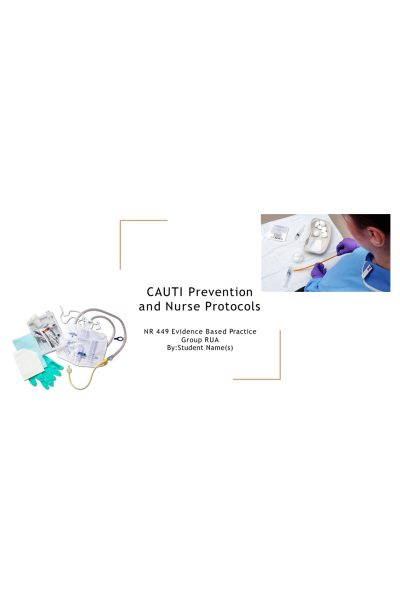NR 449 Week 8 RUA; EBP Group Presentation - CAUTI Preventionand Nurse Protocols
-
$20.00
| Institution | Chamberlain |
| Contributor |
Brief Overview-Megan
- A urinary tract infection (UTI) encompasses any infection affecting the kidney, uterus, and bladder. A urinary catheter, or tube positioned into the bladder via the urethra to let out urine, is associated with nearly 75% of UTIs acquired in healthcare organizations (Singha et al., 2017, P.21).
- The most acquired hospital-acquired infection is catheter-associated urinary tract infections (CAUTI), and its rates continue to rise. Each year, over 560,000 patients acquire a CAUTI, which upsurges medical expenses, hospital stays, patient morbidity, and mortality. To save lives and avoid injury, RNs can significantly reduce CAUTI rates. Bacteria or yeast can move along a urinary catheter and infect a patient's bladder or kidney if they have one. Professionals should only use urinary catheters when necessary and take them out as soon as possible.
- The most prevalent infections connected with healthcare in the US continue to be catheter-associated urinary tract infections (CAUTI). According to estimates, there were two CAUTI cases per 1000 hospital days with an indwelling catheter in US acute care hospitals in 2011 (Podkovic et al., 2019). Healthcare- associated urinary tract infections (CAUTIs) are thought to be responsible for about 13,000 fatalities annually and can result in more severe complications like sepsis and endocarditis (Podkovic et al., 2019). This shows how significant this issue is.......... Continue
| Instituition / Term | |
| Term | Uploaded 2023 |
| Institution | Chamberlain |
| Contributor | |



















































